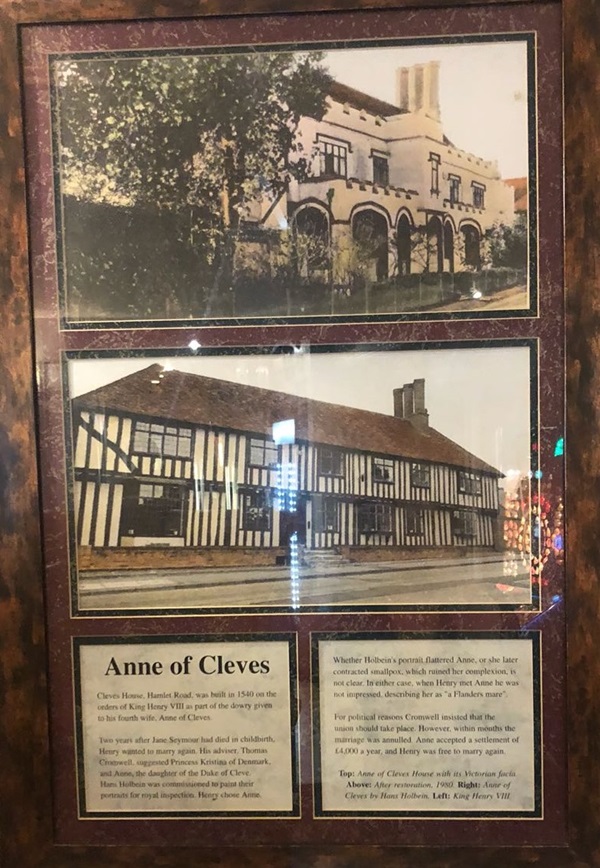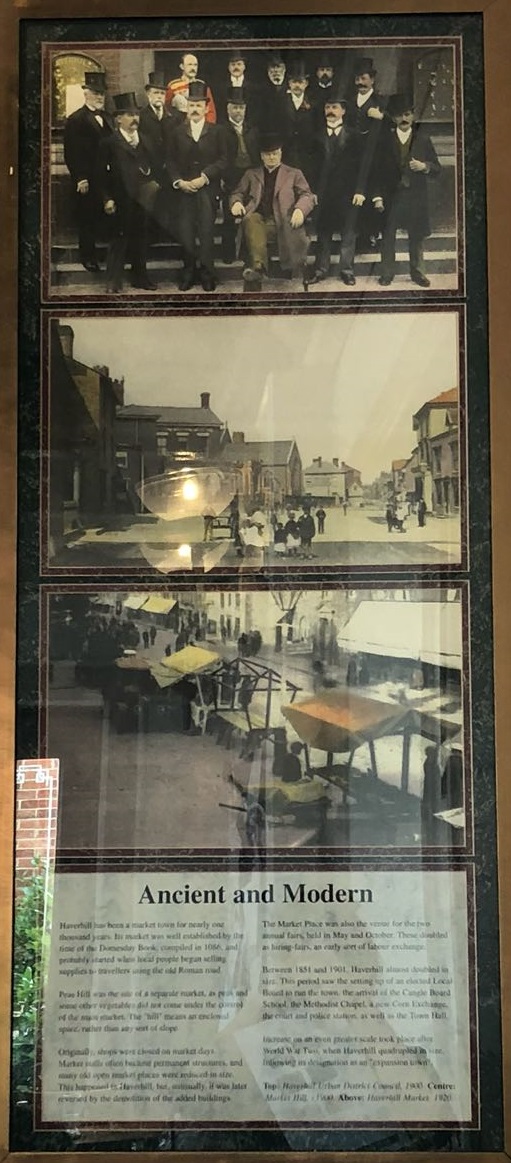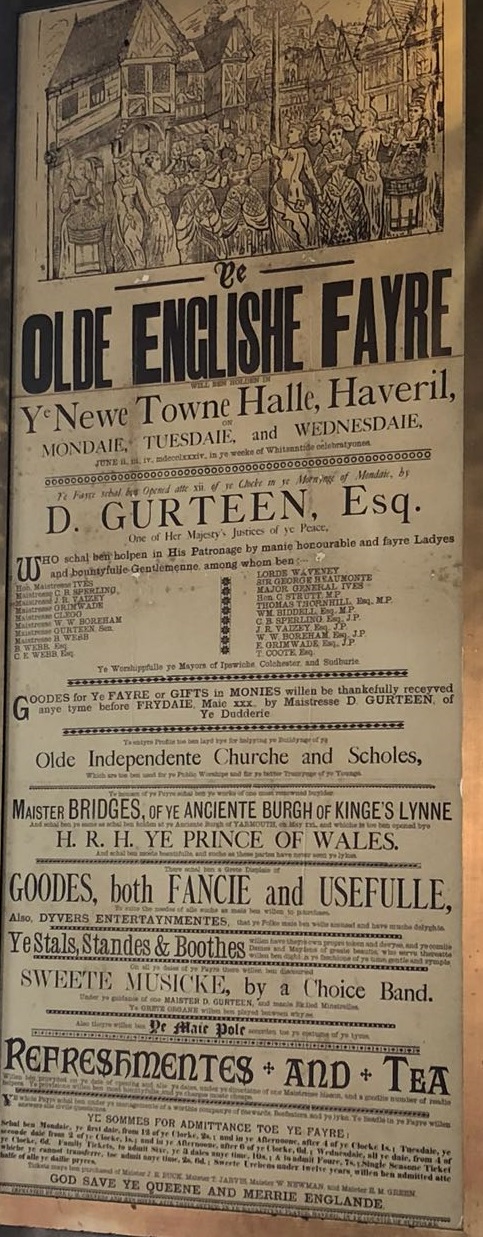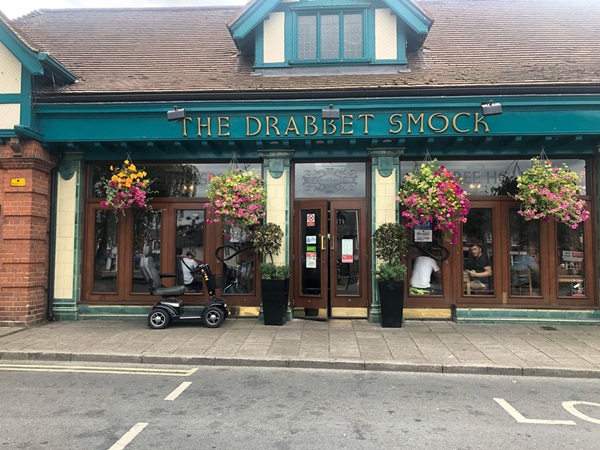During the 19th century, Haverhill developed into a significant textile centre, known for making drabbet smocks for agricultural workers. In 1856, Gurteen & Sons built a factory with 32 steam-driven power looms. The new factory brought expansion and, during 1851–1901, Haverhill almost doubled in size to make it ‘a complete Victorian town’.
Prints and text about Anne of Cleves.

The text reads: Cleves House, Hamlet Road, was built in 1540 on the orders of King Henry VIII as part of the dowry given to his fourth wife, Anne of Cleves.
Two years after Jane Seymour had died in childbirth, Henry wanted to marry again. His adviser, Thomas Cromwell, suggested Princess Kristina of Denmark, and Anne, the daughter of the Duke of Cleve. Hans Holbein was commissioned to paint their portraits for royal inspection. Henry chose Anne.
Whether Holbein’s portrait flattered Anne, or she later contracted smallpox, which ruined her complexion, is not clear. In either case, when Henry met Anne he was not impressed, describing her as “a Flanders mare”.
For political reasons Cromwell insisted that the union should take place. However, within months the marriage was annulled. Anne accepted a settlement of £4,000 a year, and Henry was free to marry again.
Top: Anne of Cleves house with its Victorian facia
Above: After restoration.
Prints and text about Haverhill.

The text reads: Haverhill has been a market town for nearly one thousand years. Its market was well established by the time of the Domesday Book, compiled in 1086, and probably started when local people began selling supplies to travellers using the old Roman road.
Peas Hill was the site of a separate market, as peas and some other vegetables did not come under the control of the main market. The “hill” means and enclosed space, rather than any sort of slope.
Originally, shops were closed on market days. Market stalls often became permanent structures, and many old open market places were reduced in size. This happened in Haverhill, but, usually, it was later reversed by the demolition of the added buildings.
The Market Place was also the venue for the two annual fair, held in May and October. These doubled as hiring-fairs, an early sort of labour exchange.
Between 1851 and 1901, Haverhill almost doubled in size. This period saw the setting up of an elected Local Board to run the town, the arrival of the Cangle Board School, the Methodist Chapel, a new Corn Exchange, the court and police station, as well as the Town Hall.
Increase on an even greater scale took place after World War Two, when Haverhill quadrupled in size, following its designation as an “expansion town”.
Top: Haverhill Urban District Council, 1900
Centre: Market Hill, 1900
Above: Haverhill Market, 1920
A old poster for Haverhill’s fayre.

Old photographs of Playhouse and Parish Church.

External photograph of the building – main entrance.

If you have information on the history of this pub, then we’d like you to share it with us. Please e-mail all information to: pubhistories@jdwetherspoon.co.uk